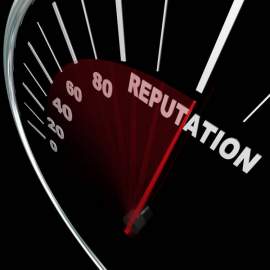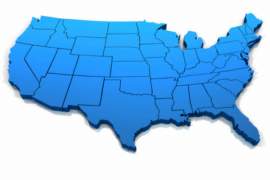
How a Hashtag Tracker Makes Twitter Easier for Lawyers

Over two thirds of businesses using Twitter aren't doing analysis of their hashtags or their Twitter reach. Whether you're starting to use Twitter by creating your own hashtags or by using other people's pre-existing tags, you may wonder how much of an effect your tweets are really having. Hashtag tracking is a great way to monitor your Twitter marketing progress and is relatively simple to set up and use. In this guide, we'll take a look at how to find a hashtag tracker that works for your business, and how to make hashtag tracking work smoothly no matter what tags you're using.
Analytics: The Key to Twitter Marketing Success
One of the biggest developments in marketing over the last decade or so has been a vast improvement in our ability to track and analyze people's behavior on their computers. For example, most companies that are using search engine optimization techniques will periodically use Google Analytics or some other analysis software to help them understand which keywords are working best.
Twitter analytics are equally important, but perhaps because not enough companies are taking Twitter seriously yet, they tend to be disregarded. Hashtag tracking is one of the easiest ways to start doing real analytics on your Twitter posts and the responses you're getting. While a hashtag tracker can initially seem quite complicated, the purpose is simple: by tracking where your hashtags are spreading to, you can find new target markets and new places to get followers from.
How Does Hashtag Tracking Work?
Depending on what hashtag tracker you're using, tracking can happen in one of several ways. The most basic type of hashtag tracking involves looking at the relative popularity of a hashtag over a long or short period of time. A hashtag tracker like Hashtags.org can help you check this. While you can always use this kind of hashtag tracking after you use a new hashtag (to track whether it has attained viral popularity), it's also a good idea to check out popularity trends before using an existing hashtag.
Another, more advanced, type of hashtag tracking happens when you look at who else started using the hashtags you produced. In order to do this, you'll usually need a hashtag tracker tool specifically designed for the purpose of analyzing re-tweets and how hashtags spread. These hashtag tracking tools work by searching for your hashtag and seeing how it spread virally. When you want to see which of your experiments with hashtagging has been most successful, you need this type of hashtag tracker, not just a way to see popularity over time.
Is Using a Hashtag Tracker Expensive?
The cost of doing hashtag tracking largely depends on what kind of tracker software you're using. If you're using a hashtag tracker on a publicly available website, like Hashtags.org, you can track hashtag popularity for free. Many other sites that do simple hashtag tracking similarly come completely free of charge.
However, if you want to use a more complicated hashtag tracker, you might have a harder time finding free tools to use. Hashtag tracking and analytics that looks at how your tags spread and how your hashtags are working can cost money, and some of them may cost more than others. You should always be able to ask for a free trial of any software that you are curious about, so that you can try it before you buy and make sure the functionality and interface work for you.
Keep in mind that even if you have to pay some money for hashtag tracking, the benefits can more than make up for what you paid. If you're able to find some hashtag solutions that seem to really work for generating new followers or even new clients, spending small amounts of money on software will have been a very good investment.
Is Using a Hashtag Tracker Difficult?
Most of the time, people making hashtag tracking software know very well that their target audience isn't made up of professional programmers. As long as you have a basic understanding of how the hashtag system works, using a hashtag tracker should be fairly easy for anyone with basic computer competence.
Most paid hashtag tracking tools are designed with tutorials and help documentation to make sure that if you get stuck, you can figure out how to do what you're trying to do. If you're using a free tool, there may not be as much support, but you can usually Google for any information about how to use a particular aspect of your hashtag tracker.
Can I Track Anything Else With a Hashtag Tracker?
In addition to letting you do hashtag tracking, some hashtag tracker software also lets you track the spread of URLs that you use in your tweets. This can help you to identify which of your URLs was most effective at bringing new traffic to your website or blog.
Twitter actually makes it easier to track these, because your links will be made shorter automatically and assigned their own unique shortened Twitter URL. This unique URL is much easier to track all over the web than if you had used the original URL from the blog or website you're linking to.
What Can I Do With Hashtag Tracking Results?
Using a hashtag tracker will generate a great deal of data, but of course that means very little unless you know how to use it. One of the first things that you might notice about hashtag tracking results is that some of your hashtags are vastly outperforming others. Do you notice a trend in the ones that work versus the ones that don't? Perhaps a topic you're discussing just isn't of interest to your followers. If you still want to talk about that topic, you may need to find new followers who might be more likely to re-tweet about it.
You may also see in your hashtag tracker that you get diminishing returns from a particular tag after using it several times. If you notice a big dropoff after you've used hashtags ten times or more, for example, you now know a good place to cut off using a new tag.



















